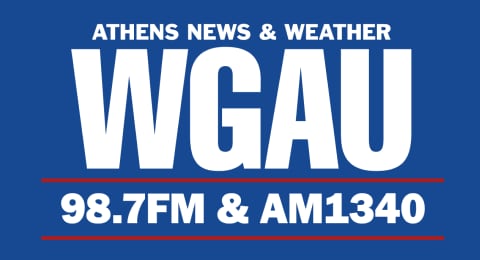Jack Davis has died. If the name is not familiar to Athens and to Georgia Bulldog fans around the state, Davis' work certainly is. Davis illustrated the famous and numerous Georgia Bulldog cartoons that are prominent in Athens and all across Georgia. Davis, who rose to prominence via his role at Mad Magazine, was 91.
Jack Davis' Wikipedia biography...
Early life[edit]
Davis was born in Atlanta, Georgia.[1] As a child, he adored listening to Bob Hope on the radio, and tried to draw him, despite not knowing what Hope looked like.[2]
Career[edit]
Early work[edit]
Davis saw comic book publication at the age of 12 when he contributed a cartoon to the reader's page of Tip Top Comics #9 (December 1936). After drawing for his high school newspaper and yearbook, he spent three years in the U.S. Navy, where he contributed to the daily Navy News.[1]
Attending the University of Georgia on the G.I. Bill, he drew for the campus newspaper and helped launch an off-campus humor publication, Bullsheet, which he described as "not political or anything but just something with risque jokes and cartoons." After graduation, he was a cartoonist intern at The Atlanta Journal, and he worked one summer inking Ed Dodd's Mark Trail comic strip, a strip which he later parodied inMad as Mark Trade.[3]
Comic strips and comic books[edit]
In 1949, he illustrated a Coca-Cola training manual, a job that gave him enough cash to buy a car and drive to New York. Attending the Art Students League of New York, he found work with the Herald Tribune Syndicate as an inker on Leslie Charteris's The Saint comic strip, drawn by Mike Roy in 1949–50. His own humor strip, Beauregard, with gags in a Civil War setting, was carried briefly by the McClure Syndicate. After rejections from several comic book publishers, he began freelancing for William Gaines' EC Comics in 1950, contributing to Tales from the Crypt, The Haunt of Fear, Frontline Combat, Two-Fisted Tales, The Vault of Horror, Piracy, Incredible Science Fiction, Crime Suspenstories, Shock Suspenstories and Terror Illustrated.
In 2011, Davis told the Wall Street Journal about his early career and his breakthrough with EC:[4]
"I was about ready to give up, go home to Georgia and be either a forest ranger or a farmer. But I went down to Canal Street and Lafayette, up in an old rickety elevator and through a glass door to Entertaining Comics where Al Feldstein and Bill Gaines were putting out horror [comic] books. They looked at my work and it was horrible and they gave me a job right away!""Every time you went in to see Bill Gaines, he would write you a check when you brought in a story. You didn't have to put in a bill or anything. I was very, very hungry and I was thinking about getting married. So I kept the road pretty hot between home and Canal Street. I would go in for that almighty check, go home and do the work, bring it in and get another check and pick up another story." [Edit: the actual cross street to Lafayette was Spring Street, not Canal.]
Davis was particularly noted for his depiction of the Crypt-Keeper in the horror comics, revamping the character's appearance from the more simplistic Al Feldstein version to a tougher, craggier, mangier man with hairy warts, salivating mouth and oversized hands and feet, who usually didn't wear shoes. Among the classic horror tales he illustrated were "Foul Play" which was cited in Dr. Fredric Wertham's book Seduction of the Innocent for its depiction of "a comic book baseball game". Others, like "Tain't the Meat, It's the Humanity", "Death of Some Salesman", "Fare Tonight Followed by Increasing Clottiness", "Tight Grip" and "Lower Berth" were Crypt-Keeper classics. He did the covers for every issue of Crypt from issue #29 to #46. In his work for Harvey Kurtzman's war comics he tackled a variety of subjects and had a particular affinity for depicting American Civil War stories. He also did many covers for Frontline Combat, Two-Fisted Tales and Incredible Science Fiction as well. The editors, William M. Gaines, Albert B. Feldstein and Harvey Kurtzman have said he was the fastest artist they had in those days, completely penciling and inking three pages a day at times, or more. His use of the brush to create depth and mood was unique and memorable. His wrinkled clothing, scratchy lines and multi-layered layouts were so popular in the 1950s, that other artists at rival companies began copying the style—notably, Howard Nostrand in Harvey's horror comics.[5] In the late 1950s, Davis drew Western stories for Atlas Comics. His 1963 work on the Rawhide Kid (#33-35) was his last for non-humor comic books.
His style of wild, free-flowing brushwork and wacky characters made him a perfect choice when Harvey Kurtzman launched Mad as a zany, satirical EC comic book in 1952. He appeared in most of the first 30 issues of Mad, all 12 issues of Panic and even some work in Cracked. Davis contributed to other Kurtzman magazines—Trump, Humbug and Help!—eventually expanding into illustrations for record jackets, movie posters, books and magazines, including Time and TV Guide. He completed an 88-card set of humorous cartoons called Wacky Plaks, which Topps Chewing Gum Co. released in 1959. In 1961, he wrote, drew, and edited his own comic book, Yak Yak, for Dell Comics. In 1965, he illustrated Meet The North American Indians by Elizabeth Payne, published by Random House as part of their children's Step Up Books line. (ISBN 0-394-80060-5). He returned as a regular contributor to Mad magazine in the mid 1960s and appeared in nearly every issue after that for decades. He also drew many covers for the magazine, especially in the 1970s.[1]
Davis also had a regular comic strip feature in Pro Quarterback magazine in the early 1970s entitled Superfan, which was written by his Mad cohort, Nick Meglin.[1]
As of May 2014, he is the only surviving artist of the EC horror comics. Their colourist (who did no story art for EC), Marie Severin, is also still living. Wallace Wood died in 1981 and Reed Crandall died the following year. Bernie Krigstein died in 1990 and Graham Ingels died the following year. Joe Orlando died in 1998. Johnny Craig and George Evans died in 2001. Jack Kamen and Will Elder died in 2008, Frank Frazetta andAl Williamson died in 2010. Harry Harrison died in 2012 and Al Feldstein died in April 2014.
Advertising and magazines[edit]
Davis first came to the attention of TV Guide in 1965 when he illustrated an eight-page advertising supplement for NBC's TV lineup, which featured icons such as Johnny Carson, Dean Martin and fictional characters such as Dr. Kildare, Napoleon Solo and Maxwell Smart. His first cover for the magazine came in 1968, when he depicted a tribute to Andy Griffith, in which the actor was hoisted on the shoulders of his costars, Don Knotts and Jim Nabors. Davis recalls, "Every assignment was a thrill because TV Guide was the top magazine in the country. I couldn't wait to get in my little MG and drive from New York out to the magazine's offices in Radnor, Pennsylvania, to show the editors my latest design. I felt like the luckiest guy in the world." Davis would contribute 23 covers for TV Guide between 1968 and 1981. In 2013 the magazine honored him in a retrospective in which it recounted his history with the publication, and spotlighted some of his most memorable covers, including those depicting Rowan & Martin's Laugh-In (March 28, 1970), Davis' childhood hero Bob Hope for a cover on Hope's history with the Oscars (April 10, 1971) and Bonanza (August 14, 1971). Years later, while watching a TV interview of Hope, Davis was gratified to notice that his Hope cover was displayed on the back wall of the comedian's office; "it was one of the proudest moments of my life," recalled Davis.[2]
Davis created the cartoon bee which (in decal form) appears on the flanks of all the buses in the Bee-Line running from Westchester to New York City. A Westchester resident at the time, Davis lived directly adjacent to one of the Bee Line's bus routes, and he mentioned in an interview how gratifying it was to see his own artwork drive past his window several times every day. Similar synchronicity happened when Mad moved to 1700 Broadway, where the magazine's fifth-floor production department was next to a wall that had previously been the location, only three feet away, of an immense Davis cartoon for a bank, an advertisement that towered six stories over 53rd Street.[citation needed]
Films, posters, and cover art[edit]
Like fellow Mad alumnus Paul Coker, Jr., Davis also contributed to Rankin-Bass productions; his character designs are featured in Mad Monster Party, The King Kong Show, The Coneheads and the cartoon seriesThe Jackson 5ive. For Raid insecticide, Davis created the animated bug that screamed "Raid?!" Phil Kimmelman Associates created several commercials designed by Davis and animated in his style.
Davis produced the artwork for the poster for the 1963 comedy chase film It's a Mad, Mad, Mad, Mad World (which he then parodied for the cover of the Mad paperback "It's a World, World, World, World Mad"). When the Criterion Collection released the film on DVD and Blu-ray in 2014, Davis provided illustrations for the accompanying booklet.
Davis' artwork for the comedy Western Viva Max! (1969) formed the centerpiece of that film's promotional campaign, and he did the same for the film Kelly's Heroes in 1970. His poster for Robert Altman's The Long Goodbye (1973) presented the film in a comic light.
In 1963 Davis produced a work of cover art for the Richard Wolfe album, Many Happy Returns of the Day! released by MGM Records, and designed the Homer and Jethro album, Homer and Jethro Go West (RCA Victor).
In 1966, Davis created the cover art for the Johnny Cash album, Everybody Loves a Nut.
Awards and exhibitions[edit]
Davis was inducted into the Will Eisner Hall of Fame in 2003. He also received the National Cartoonists Society's Milton Caniff Lifetime Achievement Award in 1996. A finalist for inclusioon in the Jack Kirby Hall of Fame in 1990, 1991 and 1992, he received the National Cartoonists Society's Advertising Award for 1980 and their Reuben Award for 2000.
In June 2002, Davis had a retrospective exhibition of his work at the Society of Illustrators in New York. He was inducted into the Society of Illustrators Hall of Fame in 2005.
In 1989, Davis was commissioned by the United States Postal Service to design the 25-cent Letter Carriers stamp. There was some concern that the cartoon would offend some letter carriers as being too informal and not respectful of their position. However, the President of the Letter Carriers Union gave his blessing, and the stamp was well received. Although postal policy does not allow artists to portray living persons on stamps, one of the carriers in the stamp is an unmistakable self-portrait of Davis.





